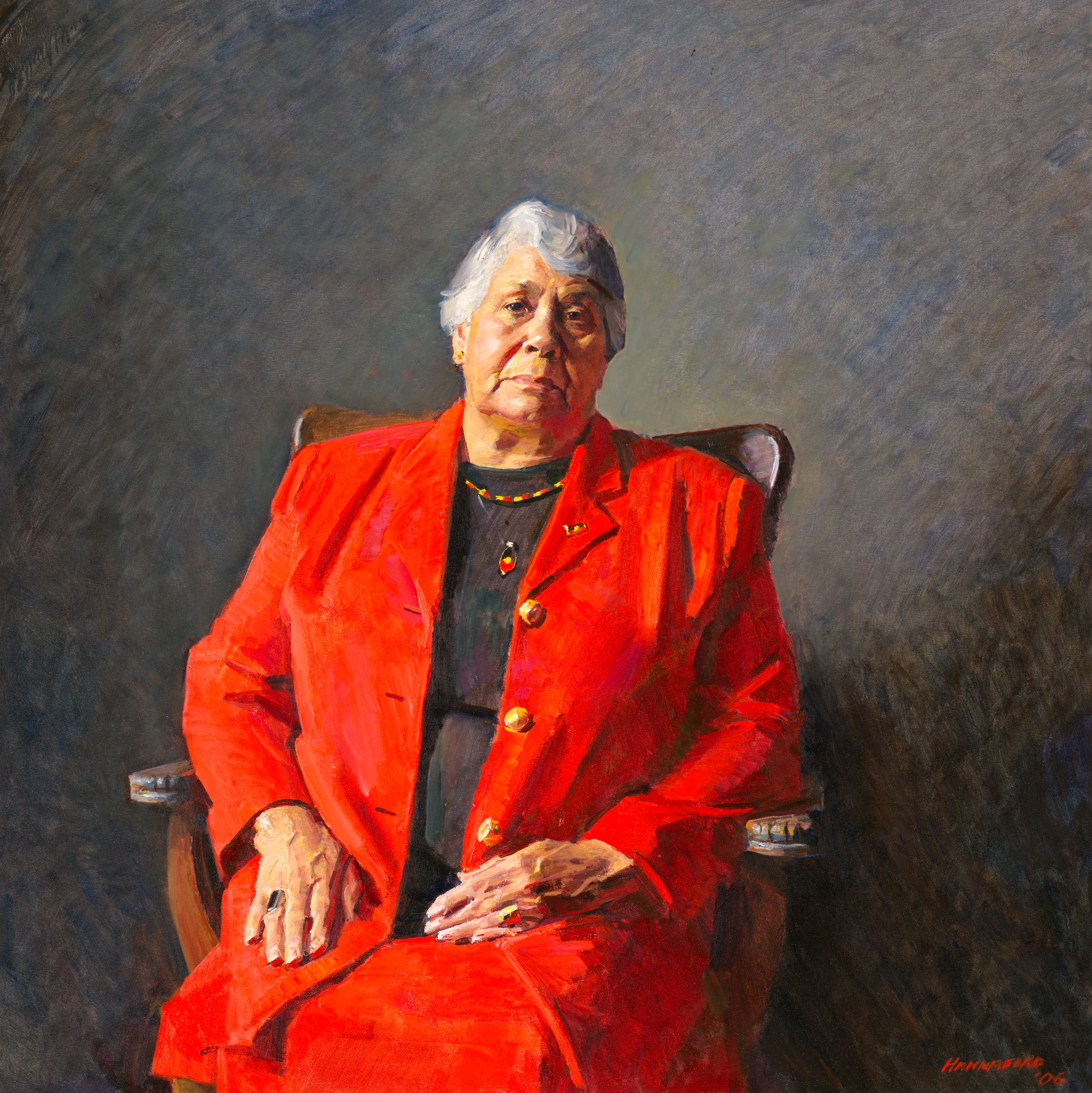This resource is designed in association with the travelling exhibition Awesome Achievers: Stories from Australians of the Year. If you cannot make it to the exhibition in person – see below for venues – you can use this resource for an online visit.
- Windsor – 22 February to 27 March 2016
- Doncaster – 6 April to 16 June 2016
- Maitland – 12 November to 5 February 2017
- Toowoomba – 22 May to 26 June 2017
- Townsville – 24 February to 16 April 2017
- Tamworth – 16 December 2017 to 4 February 2018
1. First steps (or before your visit)
Choose one of the portraits in the exhibition. (If you're doing the activities without visiting the exhibition, try using the portrait of Lowitja O'Donoghue, above.) With your students, explore the techniques and effects of portraiture – discuss how the following features contribute to a portrait's story:
- pose
- expression
- clothing
- background
- scale
- composition or framing
- colour
- symbols or props
Hold a class discussion about what qualities you expect an Australian of the Year to embody. Invite each student to write three qualities they consider important. Through discussion, create an overall list. Is the characteristic that is most commonly listed the same as that which, after discussion, students consider to be the most important?
2. Core activities (or during your visit)
Look at the portrait discussed prior to the visit. How is the experience different to viewing the image online? (Or if you can't see the portrait in person, try comparing the above image of Lowitja O'Donoghue to the zoomable image of her portrait.
Choose another portrait, and discuss its key attributes. Compare and contrast with the first portrait.
Ask students to form small groups, find a favourite portrait and then share their choice with another group. What do they like about the portrait? What do they admire about its subject? Is there something they would add to the portrait? Or take away?
Look at a pair of portraits in different media, eg a painting and a photograph, or a photograph and a drawing. How does the medium used contribute to the portrait? What are the strengths and weaknesses?
Select three portraits with different moods. How have the artists achieved this? What have the subjects contributed?
3. Extension (or after your visit)
Students choose one Australian of the Year, research their life further and develop a presentation about what makes them an outstanding Australian. Include the portrait from the exhibition and examine what story the artist has told.
Choose a subject and discover other images of them. Create a story book of their life using text and image for younger readers – for someone in Year 1 or 2. Encourage students to include a portrait they have produced. Consider how each image adds to the story.
Examine an Australian of the Year from fifty years ago and compare them with one from the last ten years. What are the qualities that led to them receiving the award? Does the choice of Australian of the Year reflect particular concerns within society at the time? If so, how? If not, why not? Are there enduring qualities that are more important?
If Australia Day wasn't celebrated on 26 January, the date of the arrival of the First Fleet in Sydney Cove and considered by many to be Invasion Day, what could be an alternative date to celebrate our national day? Discuss as a class and come up with a range of possibilities. In groups, students choose one to promote and run a campaign designed to convince other students to vote for their choice in a school wide (or class) referendum. Students should consider different ways of promoting their cause.
Design a poster, TV ad, Youtube clip promoting Clean Up Australia.
Look at the portraits of Alan Bond and explore what they reveal about him. Discuss his life story, is he a hero or villain? Are the qualities that made him successful in one area of his life also the ones that contributed to his downfall?
Based on the Australian of the Year model, have your class organise a School Person of the Year award and invite everyone from the school community to nominate someone, with different sections of the school community deciding on a person they put forward. Your class must decide who should be chosen. Each student creates a portrait of the person selected.
Almost all the portraits in the exhibition Awesome Achievers are from the permanent collection of the National Portrait Gallery, which promotes understanding and appreciation of the Australian people – our identity, history, culture, creativity and diversity – through portraiture. Are there stories about Australian people that aren’t shown by the Australians of the Year? Why do you think some professions are not represented in Australian of the Year awards?














